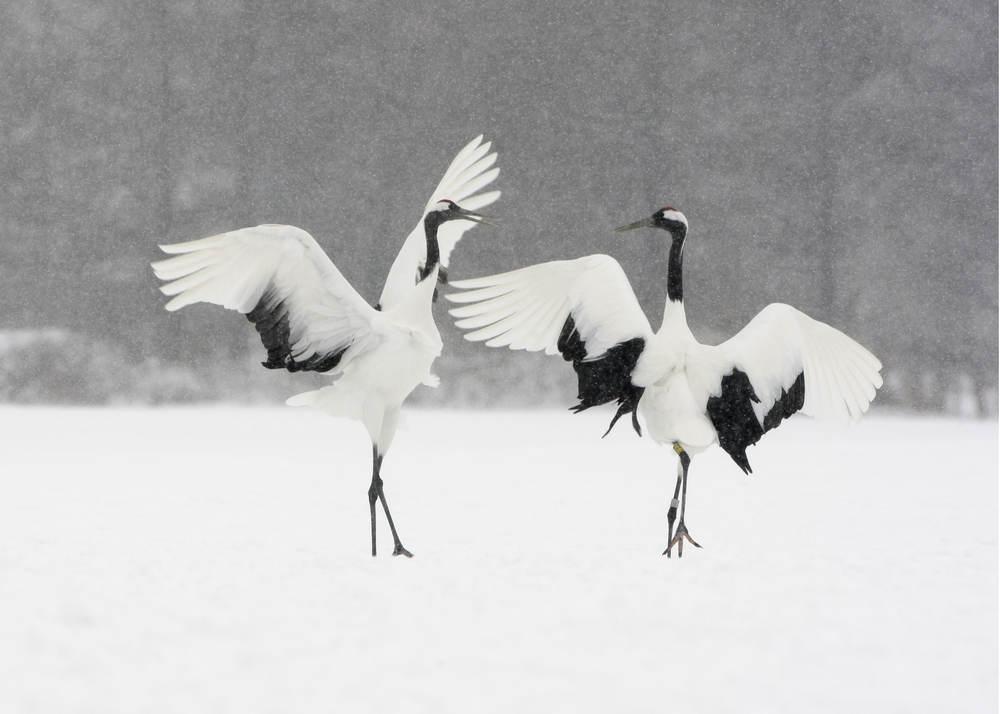
The Japanese crane must surely be one of the most beautiful birds in the world. Its tall stature, striking colouration and tender courtship dance have made it an iconic species in the Far East where it lives. This species is widely regarded as a symbol of luck, longevity and fidelity, so is truly worth celebrating this Valentine’s Day.
It is also known as the red-crowned crane, for the patch of red bare skin on the top of its head. This changes in size and brightness, depending on how excited or relaxed the bird is. Overall, they are snow white in colour with black secondary and tertial feathers. The male has a black throat, neck and cheeks, whereas these areas are pearly grey in the female.
The Japanese crane stands an impressive 150-158cm tall, with an even more impressive wingspan of around 2.5 metres. It is one of the heaviest crane species in the world, weighing up to 15kg, and is also one of the rarest. The Japanese crane came precariously close to becoming a fashion victim, as they were hunted to the brink of extinction at the beginning of the 20th century so that their plumage could be used to adorn hats and other fashion accessories. Today, their most pressing threat is destruction of their wetland nesting habitat caused by conversion to agriculture and industrial development. The global population is thought to have declined by at least 20% over the past 37 years so the species are currently listed as endangered on the IUCN’s Red List.
The current population estimate stands at around 2,750 Japanese cranes in the wild. Around 1,200 birds are found in the resident population on the island of Hokkaido in northern Japan. The rest make up migratory populations which breed in Siberia, north-eastern China and Mongolia. In winter, these birds migrate to eastern China and North and South Korea. They forage using a walk and peck technique, feeding on a broad variety of items that include rice, water plants, aquatic invertebrates, amphibians, fish, rodents and other birds. They nest in coastal marshes where they build a nest in dead reeds between 30 and 200cm tall. Two eggs are usually laid but only one chick is likely to survive.
Adult Japanese cranes usually pair for life, and the bond between them is reinforced by a mesmerising courtship dance, which also serves as territorial advertisement. Sometimes described as ‘snow ballerinas’ the male and female cranes will move rhythmically until they are standing close, sky-point by throwing their heads back and call in unison. They also raise their wings, showing off their black feathers, and may even leap gracefully into the air.
This synchronised dance is one of nature’s great spectacles and has unsurprisingly led to the Japanese crane becoming a symbol of great cultural importance, featuring in myths and legends in China and Japan. In Taoism, the bird is a symbol of longevity and immortality and in Chinese art and literature, immortals are often depicted riding on cranes. It is also a symbol of nobility in China, with depictions of cranes appearing on Shang Dynasty tombs and Zhou Dynasty ceremonial bronzeware. In Japan, the crane is said to live for 1,000 years and believed to grant favours in return for acts of sacrifice. It is the bird of happiness and long life.
